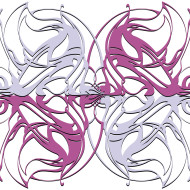
As one of 12 Laban Movement Analysts who participated in a 2014 research project comparing our observations with those of 12 experts in the French system of Functional Analysis of the Dancing Body (AFCMD), I was keen to hear the preliminary results of the study.
The presentation of the project by co-researchers Nicole Harbonnier-Topin, Genevieve Dussault, and Catherine Ferri at the Montreal conference in early June did not disappoint. Here is a brief report on their findings.
The study focused on making explicit the “tacit knowledge” employed by expert movement analysts. … Read More








